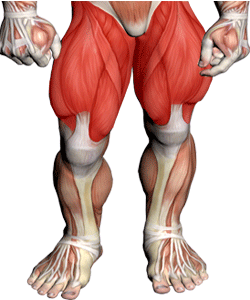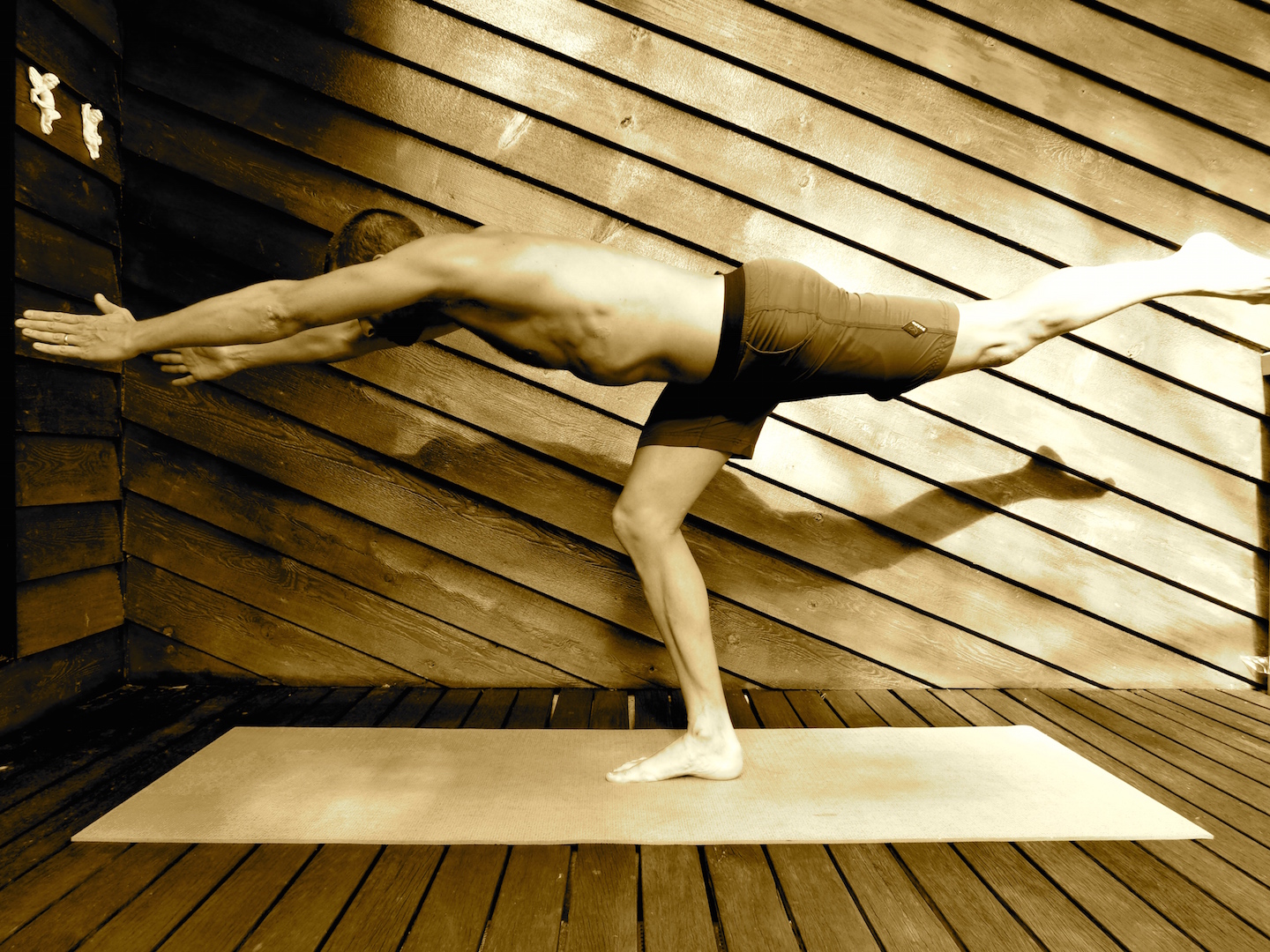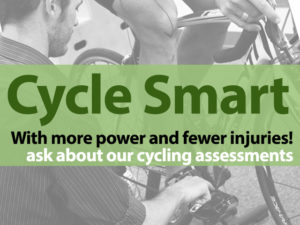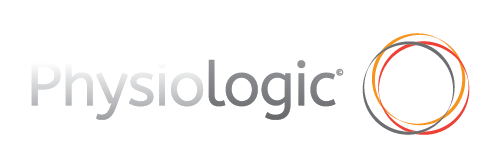Quads Strength – A proven reducer of knee pain
A huge number of people coming through the clinic have knee pain. It seems like the New Year efforts to get fit is taking its toll on some! Don’t let your New Years fitness Resolutions come at the cost of sore knees.

In almost all cases this knee pain causes or results from poor strength in your quadriceps muscles. These muscles are located in the front of your thigh and have a large role in stabilising your knee joint.
Recently, I had an interesting experience treating two knee pain clients with the same complaint and I really want to share the treatment and progress with you. It highlighted to me the absolute importance of quadriceps strength in overcoming knee pain
Both of these patients (females) were from similar backgrounds and had similar goals.
Both were prescribed the same quads strength drills to perform. One was very diligent with the drills and the other was flat out terrible at complying with her program!
Not only this but she took advice from one of her friends and started performing the wrong type of strength exercise!
We took some results at the end a 6 week treatment period.
Have a look below to see the different results:
| |
Patient A |
(Compliant) |
Patient B |
(non-compliant) |
| Outcome Measured: |
Initial Score |
Final Score |
Initial Score |
Final Score |
| Step up (Subjective Score) |
7/10 |
1/10 |
7/10 |
5-6/10 |
| Squad (degrees until pain onset) |
15 |
90 |
12 |
20 |
| Walking (time until pain onset) |
5 min |
unlimited |
8 min |
15 min |
| Happiness with daily function (Subjective Score) |
2/10 |
9/10 |
3/10 |
5-6/10 |
The moral of the story is:
* If you have knee pain – quadriceps strengthening will have a massive effect
* Always commit to your rehab program – the biggest factor in attaining your goals
* Listen only to your physiotherapist for advice and an appropriate program.
I have some great videos I can share with you for safe, effective strength work for your quads muscles. If you have or want to prevent knee pain let me know via email and I will shoot you a copy.
Regards Mitch Davis
PILATES INTRODUCTORY OFFER
Until March 31, 2015, all new patients who book with Jess will receive a free Pilates group session valued at $25.
By heightening your awareness and control over your movement, you can allow your body to work at its optimal level. Pilates classes develop your strength, core stability, balance, mobility and dynamic posture. The classes are very focused on teaching you good technique and control so you can apply your knowledge to your daily activity and exercise.
The classes are suitable for beginners to intermediate levels, however more challenging options are shown for higher levels. They cater to all age groups and are particularly appropriate for anyone looking to improve their performance or manage any ongoing, niggling injuries.
Class times:
Mondays & Thursdays 5.15 – 6 pm
Saturday mornings 8- 8:45 am
$25 per session, health fund rebate available through HICAPS at reception– booking essential (please call 55 78 71 55)
My name is Jess and I am a Pilates instructor and Physiotherapist here at Physiologic. I welcome you to join our friendly classes and I look forward to meeting you 
If you wish to book an individual assessment and tuition before joining in with the small group classes, feel free to contact our reception (55 78 71 55) to book in with our experienced Physiotherapist and Pilates instructor, Jess Lydiard.
Strength Training for Runners
Strength training is a very popular activity and one that many runners perform alongside their running training. The motivation to perform strength training varies:
- Injury prevention
- Improved performance
- Improved running efficiency
- Protecting the joints
- Prevent muscle loss from running (especially in the upper body)
- To look good at the beach (maybe this should be at number 1!)
There is compelling evidence that performing strength training exercises can improve your running performance but with such a bewildering array of training options out there how do you chose the best type of training to help achieve your goals?
Strength training should achieve two things: improve your strength for your chosen activity and improve your strength away from your chosen activity… To read more about strength training for runners please follow the link or if you are interested in attending a free seminar devoted to strength training for runners, please follow the link here.
Happy Running 🙂

Cyclist… experiencing pain in the front of the knee?
 Cycling is regarded as a safe low impact sport which results in very few injuries, however the reality is often a little different to this widely accepted view. The repetitive nature of the sport does predispose participants to overuse injuries. These problems occur when the structures involved cannot tolerate or recover effectively from repetitive loading.
Cycling is regarded as a safe low impact sport which results in very few injuries, however the reality is often a little different to this widely accepted view. The repetitive nature of the sport does predispose participants to overuse injuries. These problems occur when the structures involved cannot tolerate or recover effectively from repetitive loading.
The knee is by far the most common segment of the body where overuse injuries occur in cyclists. Although various parts of the knee can potentially be injured, the front of the knee is by far the most common. The umbrella term ‘anterior knee pain’ refers to pain or injury within this part of the knee. Symptoms can vary depending on the structure involved but usually consist of sharp strong pain during the push phase of cycling, swelling during and post ride, clicking which can also be painful, pain or ache after cooling down or the following day.
Knee structures that are typically involved are, soft tissue (ligament, joint capsule, plica, fat pad, bursa) around the knee cap, the joint underneath the knee cap (patello-femoral joint), the patella and quadriceps tendon.
So what are the key contributing factors that lead to anterior knee injury?
Technique:
I have started with this because it is an all too often over looked component of cycling and something that I consistently encounter in the clinic when managing injuries in cyclists. We often hear of what intervals, hills climbs or distances people are doing in training but when was the last time you hear a fellow cyclist say………’I’m just going to work on my technique today’…..probably never would be my guess. Fortunately problems in this area are largely changeable which usually leads to fantastic results when managing the injury. Although there are a number of common faults linked with anterior knee pain which can be identified with a cycling specific screening and video analysis there is one that repeatedly rears its head……poor activation of the gluteal muscle group. These muscles powerfully extend the hip on the down stroke which takes some load off the the quads (thigh muscles) and hence the knee (and makes us faster!). They also play an important role in avoiding inward rotation of the femur (thigh bone) which is commonly involved in anterior knee pain. It is not all about the glutes however, other issues involve the calves, hamstrings, hip flexors, and of course cycling specific core stability. All of these are commonly managed with specific exercise prescription and technique drills.
Training habits:
So we have discussed how anterior knee injuries are often overuse problems. So of course it goes without saying that increases in training duration, frequency, intensity can be involved in the onset of pain and injury. It is also important to closely monitor and graduate additions to training such as running, gym work which can lead to an increase in loading at the knee.
Bike fit/position/equipment changes:
Now onto something that probably does get a bit more attention than technique or training habits…..however there are still a large percentage of cyclists riding around in positions that could be far more comfortable, efficient and low risk in terms of overuse injuries. A professional bike fit that ensures the correct mechanical relationship between body and machine is essential to reducing unwanted mechanical overload that leads to overuse injuries.
All of the above are modifiable risk factors. Unfortunately we can’t prevent all crash related injuries but we can have a profound impact on the risk factors that are most closely related to anterior knee pain in cyclists.
If you would like more information regarding cycling related injuries or would like to book in please contact the clinic (55787155) or email admin@physiologic.com.au for more info.

fig 1
Pain between the shoulder blades ??
The region in the middle of your back between the shoulder blades (thoracic spine) is a common area for pain and like most problems is usually multi-factorial in its make up. Our thoracic spine consists of 12 vertebrae (T1-T12)
Mostly people describe a sharp or tight restrictive pain in between the shoulder blades which may refer into the ribs around the chest wall or even into the front of the chest (sternum) – see fig 1
Often this pain can be confused with heart problems !! Pain is usually reported when twisting the trunk (rotation) or with sustained postures which sparks a deep seated ache. Like most areas an injury here can either be an acute incidental injury or a progressive onset injury related to extra load on this area (postural or otherwise).
The main risk for injury in this region is poor posture and the resulting loss of muscle function. Our Pilates session at Physiologic is a great example of using specific exercises which address this problem.
We have all heard the term core stability in relation to the muscles that protect and help the lower back to function. Interestingly the mid back has its own set of muscles (core stabilisers) which also protect and optimise its function. (fig 2 ). I explain to patients that this area of the spine forms the bridge between the lower back and neck. With poor supports under the bridge the result is the bridge collapses (pain between the shoulder blades) or the ends of the bridge (neck and lower back) take all the stress and start becoming sore !!! Many times I have successfully managed neck and lower back pain by aiming my treatment at the mid back region.
Lets examine how posture and the shape of the spine increases the risk of pain ! A normal shaped spine should have a set of smooth curves.
If your mid back appears as either too flat or too rounded the risk of injury is heightened !!
 Have a friend of family member take a photo of you from side on and check what your spine looks like !!
Have a friend of family member take a photo of you from side on and check what your spine looks like !!

flat thoracic spine
If you have any pain in this area or just want to get checked by our team of experts then call the clinic (55787155) or email admin@physiologic.com.au for more info
Golf Physiotherapy Coverage of the Australian PGA Tournament, Royal Pines 2013- Josh Meyer
It was with enthusiasm that I was able to provide the physiotherapy coverage for the Australian PGA golf tournament at Royal Pines last week. The tournament was a promoters dream as it featured the both Rickie Fowler (current no. 36) and Adam Scott (current world no. 2) in the final group of the last day. Scott was the victor after showing his class on the back 9 to win by 4 shots. The runner up went to Fowler who also showed why he is at the top of the world rankings. Third was young victorian trainee professional Jack Wilson who we are bound to see big things from in the future !!
My week as physiotherapist was hectic but hugely enjoyable. A typical day involved rising at 4am to be at the course for a 5am start. From there I would begin working on the players to get them ready for the day. Mostly they would ask me to work around their spinal regions (neck and back). For golfers these areas are under the most amount of load as the week progresses, although i also treated alot of foot and leg soreness which accumulates from long hours standing and walking. Each consult would require about 20 min and it was not unsusual to see about 25-30 players daily. A quick breakfast and lunch break of 20 min and it was back to the treatment rooms.
For the first two days of the tournament there is 150 players. This means that by the time all the afternoon golfers have started the morning groups would be returning wishing to get treatment in preparation for the next day. Then the groups that started in the afternoon would return late in the day which resulted in treatments being given up till 7pm in the evening !! Needless to say i was completely spent at the end of the day.
Watching the players warm up and hit balls on the driving range gave me a great opportunity to see what ticks in the mind of the golfer pre and post round. It is interesting to see the difference in mindset between the best guys and the guys just making up the numbers. The intereseting thing is that they are all capable of hitting great shots but the ability to do it under pressure out on the course seems to be the difference. 
Highlights of my week included meeting Rickie Fowler, Steve Williams (Tiger Woods ex Caddie) and Adam Scott who by chance was wearing the green jacket that he won at the U.S. Masters Championship at Augusta this year. Not surprisingly the jacket has some strict traditional rules that apply to the wearer. They include
– Returning the jacket to Augusta National course after 1 year. It must remain there forever in your locker until you enter the clubhouse in which case you may wear it again
– If you get the jacket dirty you must not clean it – there is a specific cleaner that the jacket must go to in the USA to be cleaned
– You cannot wear the jacket unless it is worn in relevance to your win at the Masters (such as a dinner or press conference etc)
Another highlight of the week was seeing some of the local professionals that I work with performing well. Steve Jeffress, Steve Jones, Matt Ballard, David McKenzie and several others did great and it was a thrill to have a contribution to their perfromances. I was able to watch some of the golf on the course on the last day and the crowds were spectacular. Certainly a revitalised tournament which struggled last year trying to tie up a deal with Clive Palmer at his Coolum course. In fact thanks must go out to Clive as having the tournament on the Gold Coast definately helped my bid to provide the Physio.
All said and done a special week with some great memories.


Page 6 of 7« First«...34567»



 Cycling is regarded as a safe low impact sport which results in very few injuries, however the reality is often a little different to this widely accepted view. The repetitive nature of the sport does predispose participants to overuse injuries. These problems occur when the structures involved cannot tolerate or recover effectively from repetitive loading.
Cycling is regarded as a safe low impact sport which results in very few injuries, however the reality is often a little different to this widely accepted view. The repetitive nature of the sport does predispose participants to overuse injuries. These problems occur when the structures involved cannot tolerate or recover effectively from repetitive loading.




